
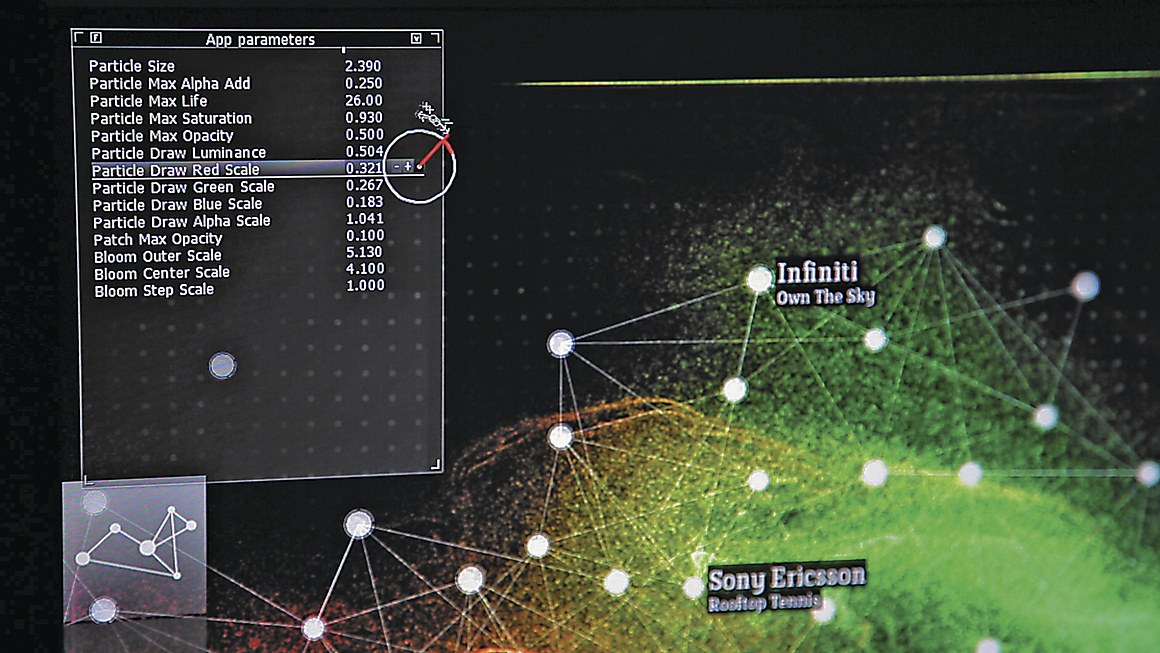
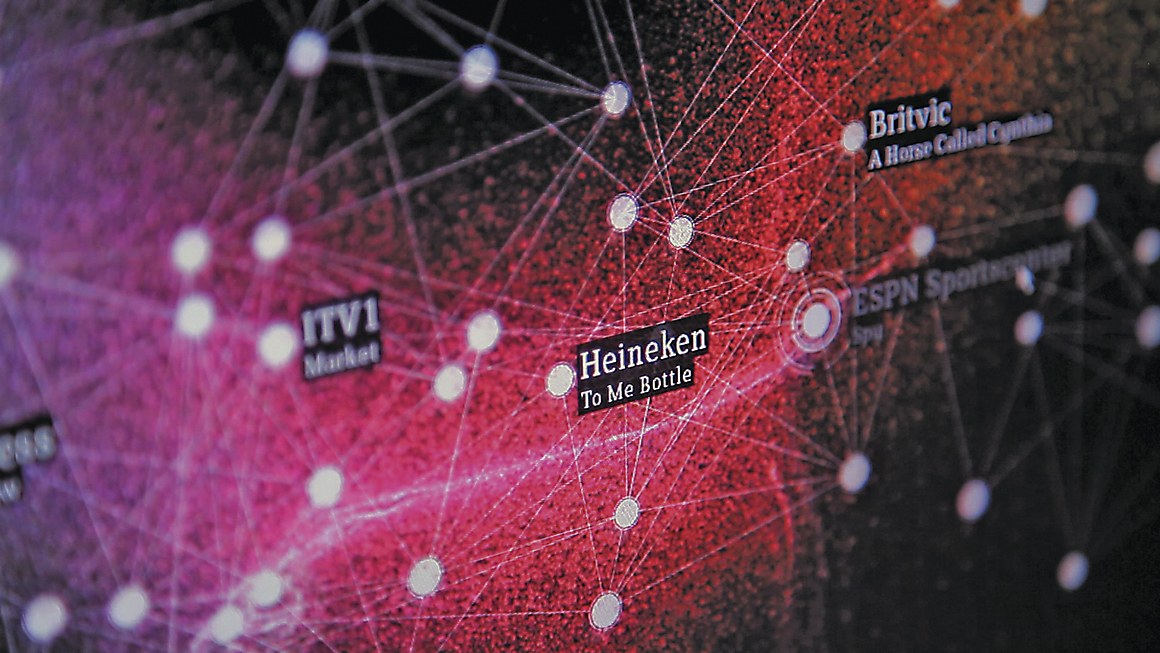
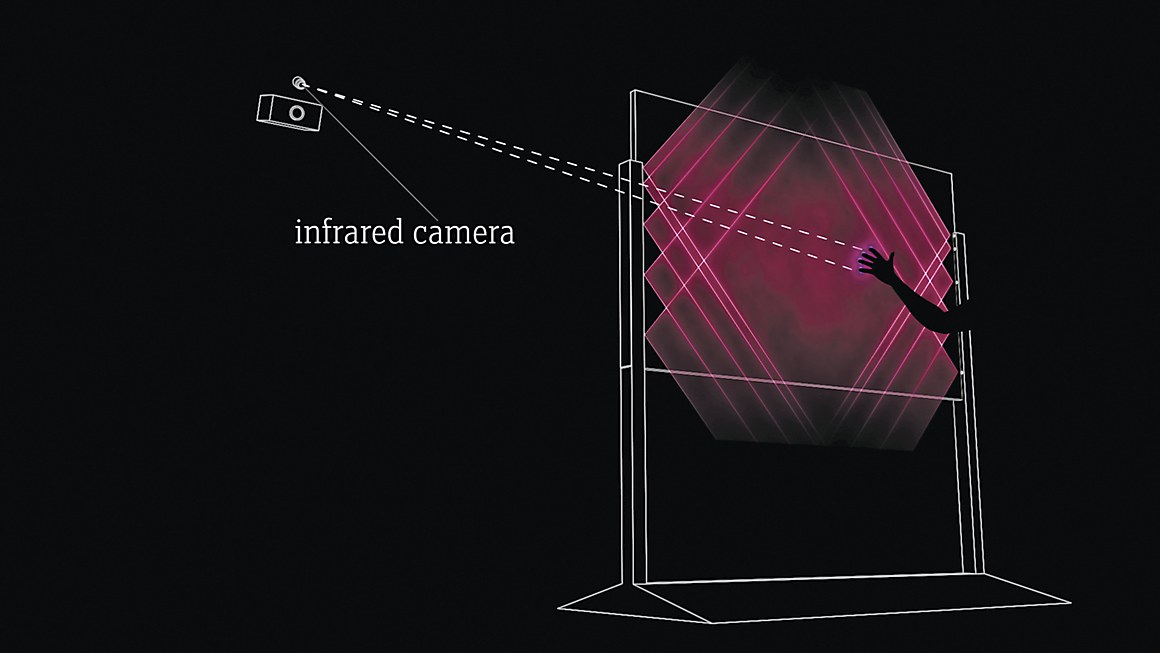
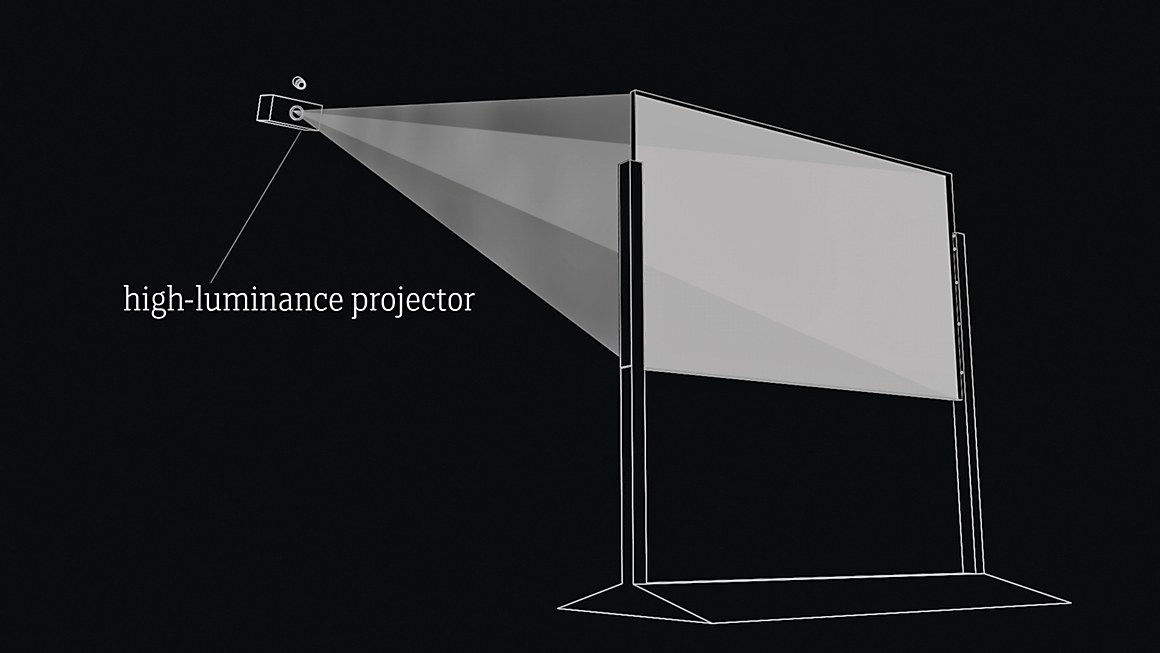
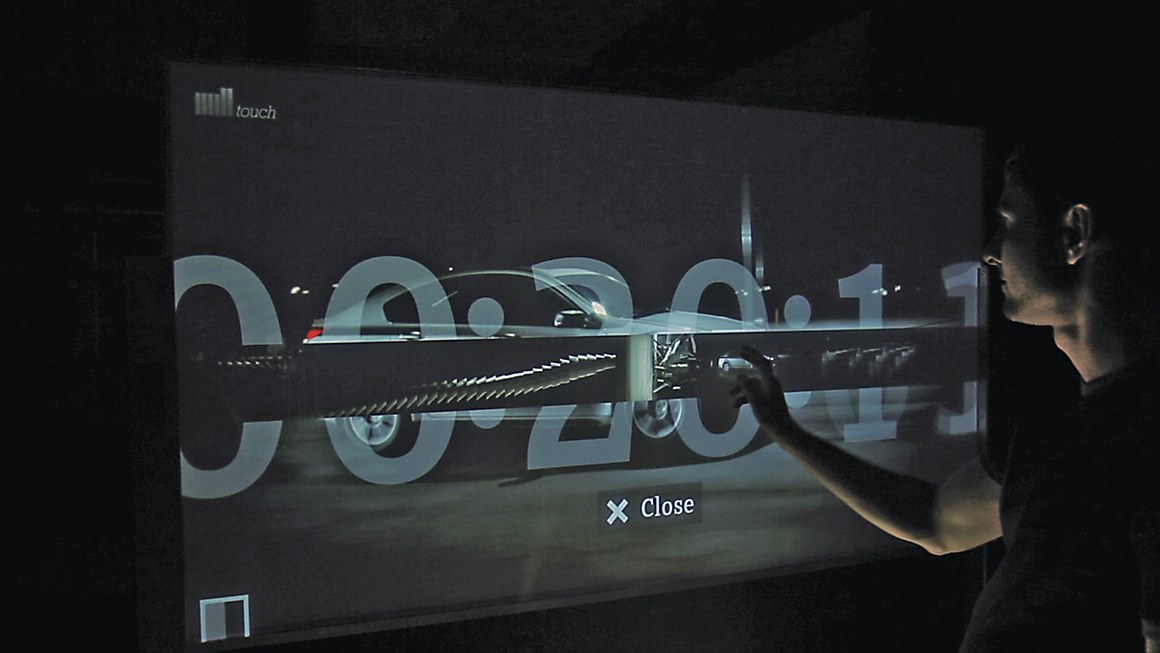
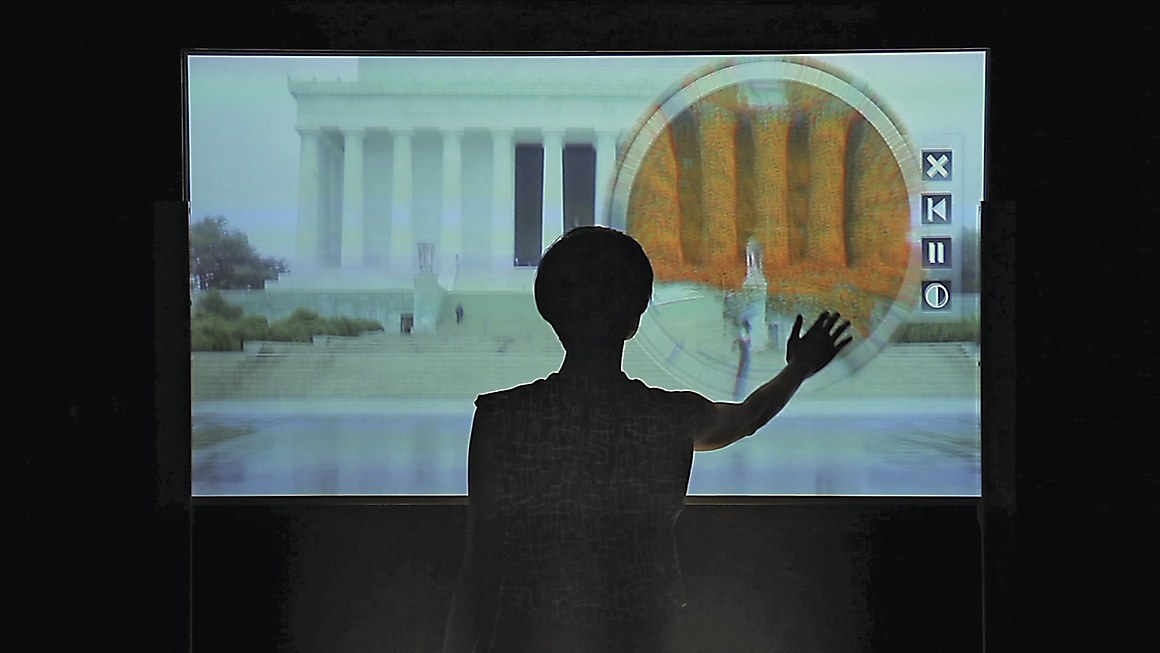
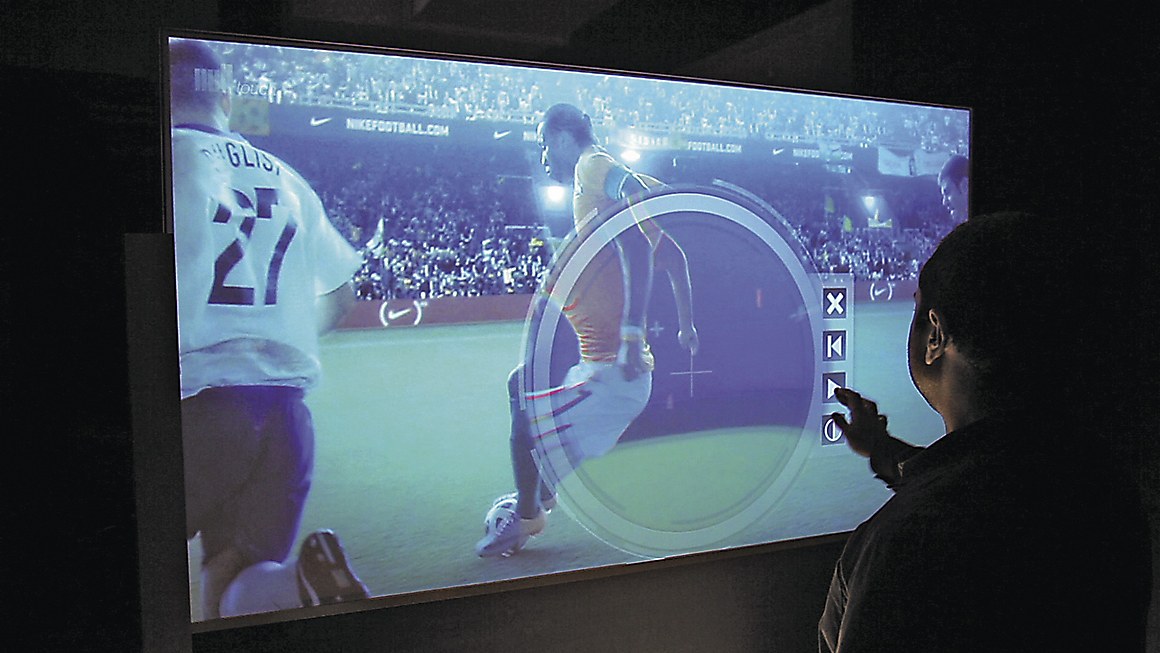
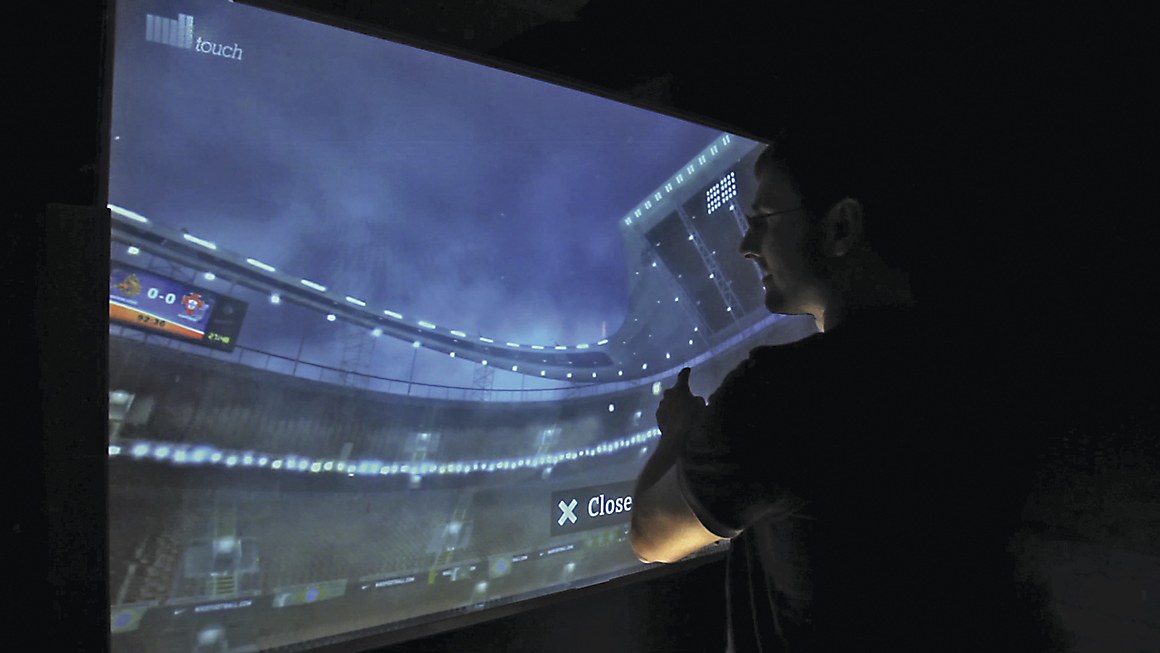

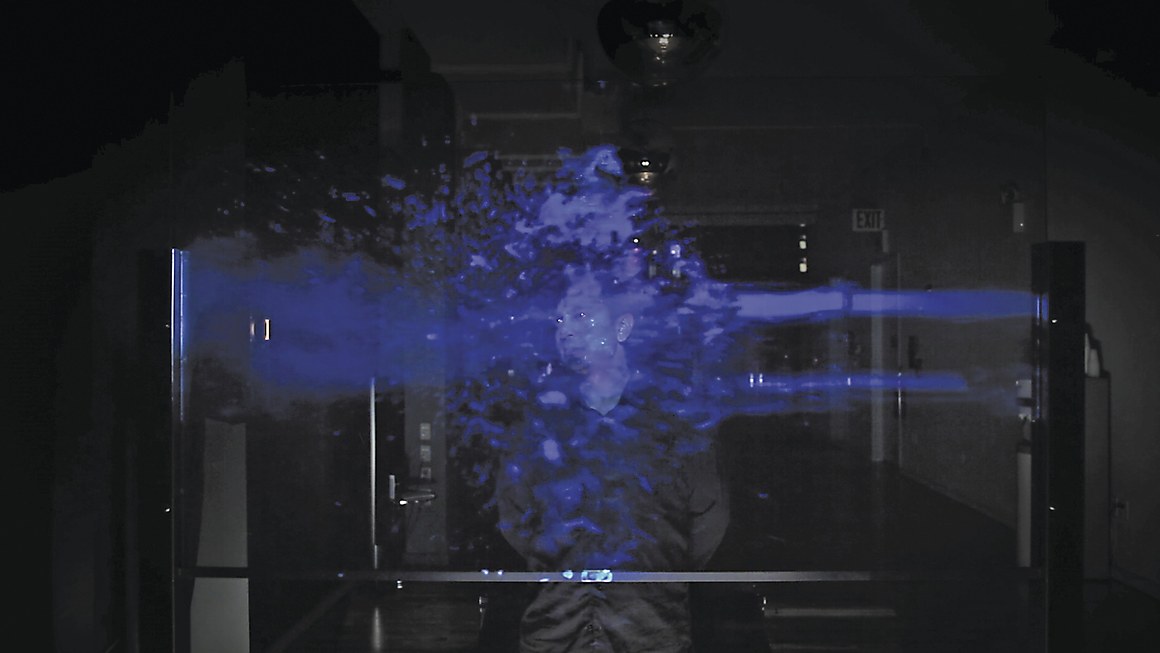
"A gorgeous use of touch technology. Very deliberate controls and navigation that provide a fluid and lush sensory experience." —juror Kim Rees
"Ordinarily touchscreens like this are all about rotating and scaling images, or Minority Report-style graphics, but this project flows and feels organic and makes the touchscreen matter." —juror Keith Butters
Overview: Remember the interactive touchscreen that detective John Anderton used to fight pre-crime in Minority Report? Remember how crazy and far-fetched that concept seemed in 2002? Fast forward to present-day and The Mill's New York office. This rear-projected, 5' x 3' interactive touchscreen panel made entirely of switchable glass presents a galaxy of info-nodes—each representing a project from The Mill's portfolio. The nodes float in a responsive celestial space made up of two million particles simulated in real time. When fingertips move across the screen, the particles and nodes respond to user touch. Users can play with the particle stream or interact directly with the nodes to reveal content and dive deeper into projects.
• Design and devlopment took ten weeks.
• Traditional video controls were replaced with an accordion track-bar that allows jumping to any part of a video with a simple swipe.
• The making-of video has amassed around 30,000 views on the web and has been demonstrated in-person 200 times since June 2011.
Comments by Andrew Bell and Sheena Matheiken:
How did this project compare with others you've worked on in the past? "Much of what makes a project like this interesting is that even core workflow questions are largely unexplored territory. Programmers of course have constraints in terms of what the schedule and the hardware will allow; contrast that with designers, for whom the sky is (mostly) the limit (if it's "in the pixels" then they've succeeded). It presented an interesting dilemma. Did we want to have our programmers dictate the set of parameters and techniques that the designers would be allowed to use, or did we want to have the designers create visuals for the programmers to vet with a technical eye? Ultimately we arrived at the latter. The designers did motion tests in After Effects and Cinema 4D and, afterward, the programmers evaluated them for feasibility. The argument was that designers can iterate much faster than developers, so it's sensible for them to begin the conversation. It worked very well for Mill Touch, and has been the workflow we've been using ever since."
Did you use any applications that you hadn't used before? "Having frequently worked with web technologies that pose limitations on interactivity and visuals, it was incredible to see the full range of creative possibilities offered by Cinder. What's exciting for us is the opportunity to not only redefine the way we interact with technology, but to have the very technology remain hidden, seamlessly integrated into the experience. The results are beautiful objects of design that transform the spaces we live in."